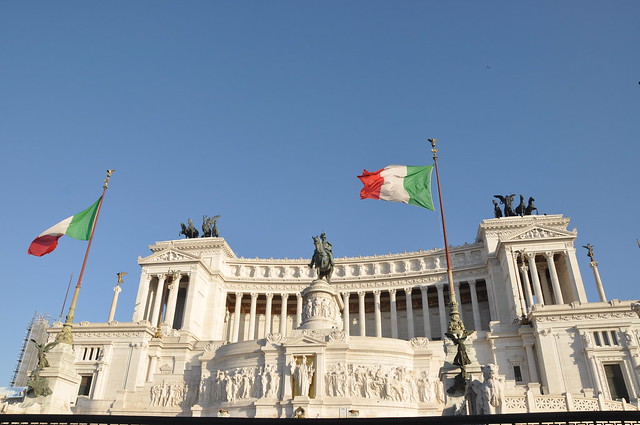
Foi logo dos primeiros monumentos que nos saltou á vista quando fazíamos a nossa viagem de autocarro desde a estação até ao nosso hotel na zona do Panteão.
Uma grandiosa homenagem ao rei que unificou Itália, construído no final do século XIX e inaugurado em 1911.
Depois de ler vários guias antes de visitar Roma, percebemos que este monumento desperta um sentimento de amor-ódio na cidade. A verdade é que acaba por destoar de tudo o que vemos, talvez seja o seu estilo ou o mármore branco que contrasta com os tons terra dos edificios mais antigos da cidade.
It was just the first monuments that jumped in sight when we made our trip by bus from the station to our hotel in the area of the Pantheon.
A great tribute to the king who unified Italy, built in the late nineteenth century and inaugurated in 1911.
After reading several guides before visiting Rome, we realize that this monument awakens a feeling of self-hatred in the city. The truth is that eventually it clashes with everything we see, maybe it's the style or the white marble that contrasts with the earthy tones of the city's oldest buildings.

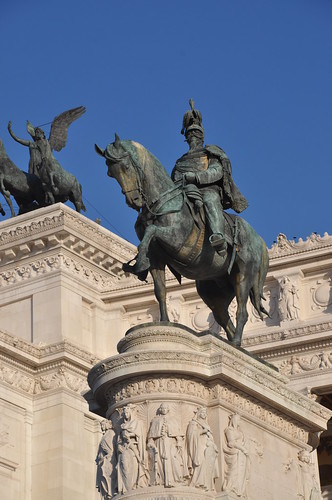
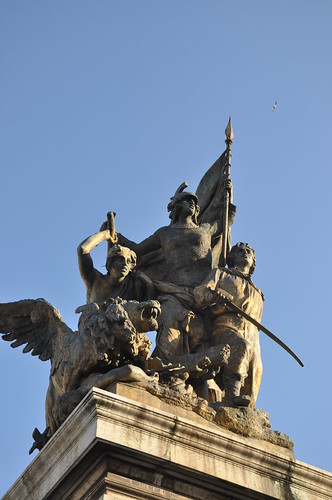
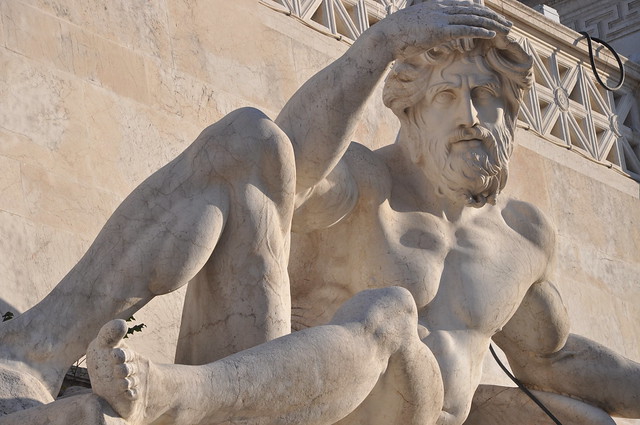
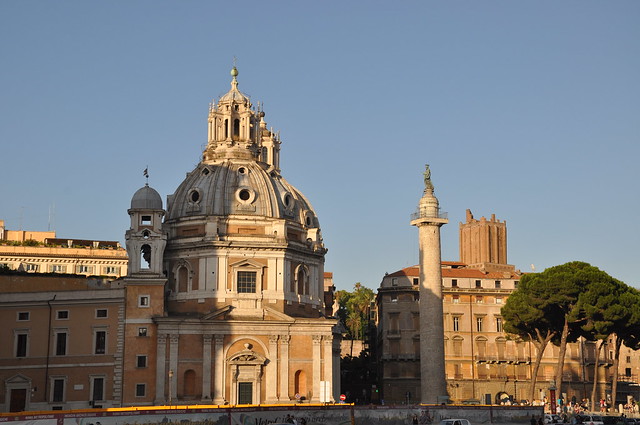


Nearby is Piazza Venezia with its old buildings in which a one wooden balcony caught our attention. This was the square where Mussolini proclaimed the birth of the Italian Empire. Also in the square is the Palazzo delle Assicurazioni Generali, designed by the same architect who created the Il Vittoriano, Giuseppe Sacconi. In front of this is the Palazzo Venezia in the fifteenth century that served as the residence of the Pope. In the twentieth century it is Mussolini who uses the palace and is on their balconies which makes some of its most iconic (and scary) speeches.
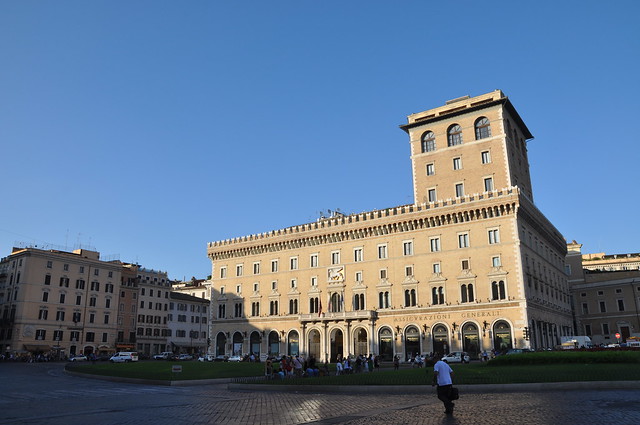 Talvez não seja das zonas mais assinaladas nos guias turísticos, muitos dos que lemos faziam breves referências ao monumento a Vittorio Emanuele II e alguns nem falavam desta praça, mas tem sem dúvida um grande interesse histórico.
Talvez não seja das zonas mais assinaladas nos guias turísticos, muitos dos que lemos faziam breves referências ao monumento a Vittorio Emanuele II e alguns nem falavam desta praça, mas tem sem dúvida um grande interesse histórico.
A great tribute to the king who unified Italy, built in the late nineteenth century and inaugurated in 1911.
After reading several guides before visiting Rome, we realize that this monument awakens a feeling of self-hatred in the city. The truth is that eventually it clashes with everything we see, maybe it's the style or the white marble that contrasts with the earthy tones of the city's oldest buildings.

É conhecido como Altare della Patria ou Il Vitoriano, tem uma estátua equestre ao centro do Rei Vittorio Emanuele II, o primeiro a reinar numa Itália unificada e que por todo o país vemos monumentos (ainda que bem mais pequenos) em sua honra.
Também como outras cidades da Europa envolvidas nas Guerras Mundiais podemos encontrar aqui o Túmulo do Soldado Desconhecido.
Nas extremidades e por cima das colunas coríntias estão duas estátuas idênticas da deusa Vitória numa quadriga. O monumento é também um excelente miradouro para ver a cidade de Roma, é aliás esta função que lhe permitiu ganhar maior interesse turístico e amenizar a polémica da sua construção.
It is known as Altare della Patria or Il Victorian has there is an equestrian statue in the center of King Vittorio Emanuele II, the first king to a unified Italy and throughout the country we see monuments (although much smaller) in his honor.
Also like other European cities involved in the World Wars you can find here the Tomb of the Unknown Soldier.
The ends and on top of it's Corinthian columns there are two identical statues of the goddess Victory in a chariot. The monument is also an excellent vantage point to view the city of Rome, this function is in fact enabling it to gain greater tourist interest and soften the controversy of its construction.
It is known as Altare della Patria or Il Victorian has there is an equestrian statue in the center of King Vittorio Emanuele II, the first king to a unified Italy and throughout the country we see monuments (although much smaller) in his honor.
Also like other European cities involved in the World Wars you can find here the Tomb of the Unknown Soldier.
The ends and on top of it's Corinthian columns there are two identical statues of the goddess Victory in a chariot. The monument is also an excellent vantage point to view the city of Rome, this function is in fact enabling it to gain greater tourist interest and soften the controversy of its construction.






Ali perto está a Piazza Venezia com os seus edificios antigos onde nos chamou a atenção uma varanda em madeira. Esta foi a praça onde Mussolini proclamou o nascimento do Império Italiano. Também na praça está o Palazzo delle Assicurazioni Generali, desenhado pelo mesmo arquitecto que criou o Il Vittoriano, Giuseppe Sacconi. Em frente a este está o Palazzo Venezia que no século XV serviu como residência do Papa. No século XX é Mussolini quem utiliza o palácio e é nas suas varandas que profere alguns dos seus mais emblemáticos (e assustadores) discursos.
Nearby is Piazza Venezia with its old buildings in which a one wooden balcony caught our attention. This was the square where Mussolini proclaimed the birth of the Italian Empire. Also in the square is the Palazzo delle Assicurazioni Generali, designed by the same architect who created the Il Vittoriano, Giuseppe Sacconi. In front of this is the Palazzo Venezia in the fifteenth century that served as the residence of the Pope. In the twentieth century it is Mussolini who uses the palace and is on their balconies which makes some of its most iconic (and scary) speeches.

Perhaps not one of the most noted in the tour guides, many of which were read brief references to the monument to Vittorio Emanuele II, and some even spoke of this square, but it has certainly a great historical interest.
Our guide of:


Sem comentários:
Enviar um comentário